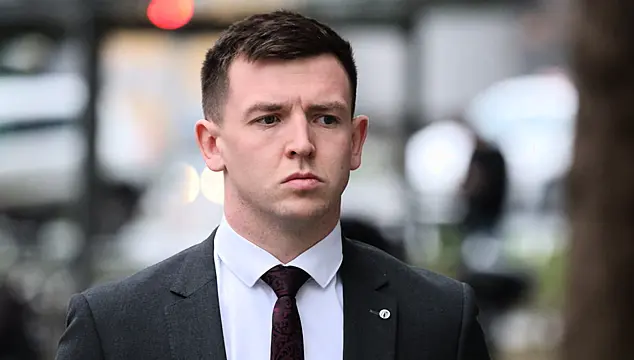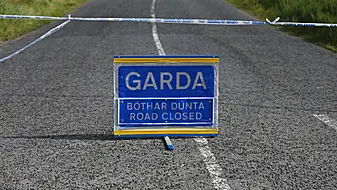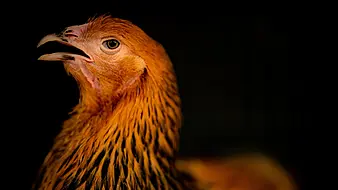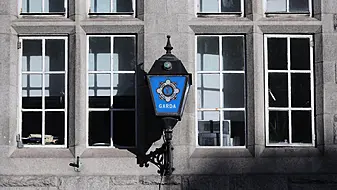One of two men who has been on trial for the past two weeks accused of the murder of Dylan McCarthy has been found not guilty by direction of the trial judge.
Ms Justice Caroline Biggs on Wednesday informed the jury at the Central Criminal Court that the Director of Public Prosecutions had indicated no opposition to an application by the legal team acting for Sean Kavanagh (26) that the accused was to be found not guilty of the charge of murder, arising out of an incident at Dublin Road, Monasterevin, Kildare, on August 21st, 2022.
Not guilty of murder by direction of trial judge
She told the jury that they are to record on their issue paper that Kavanagh is not guilty of murder by the direction of the trial judge, but that Kavanagh would remain within the case until the jury gives their verdict.
Kavanagh, of St Mary’s Lane, Church Avenue, along with co-accused Calvin Dunne (24), of Abbey View, both in Monasterevin, Co Kildare, pleaded not guilty to the murder of Mr McCarthy (29) on or about August 22nd, 2022.
Both men also pleaded not guilty to violent disorder on August 21st, 2022, at Dublin Road, Monasterevin, while Kavanagh pleaded not guilty to a charge of assault causing harm on Eamon McCarthy on the same date and at the same location.
Assault causing harm charge
Before the jury today, Kavanagh was rearraigned and pleaded guilty to the charge of assault causing harm on Eamon McCarthy. The charge of violent disorder was taken into consideration.
The jury previously heard that Kavanagh told gardaí that after a “fight spilled out onto the street” from the Bellyard pub, a large man in his 50s attacked him and got him in a headlock, which caused him to feel “extremely fearful” for his safety.
Kavanagh said he got out of the headlock before “punches were exchanged”. He said the man in his 50s was still shouting and roaring at him with his hands raised, so Kavanagh defended himself and punched the man.
Kavanagh told gardaí that he believed his only interaction with the deceased was attempting to stop him assaulting a friend of his.
“I believe if I did not take those actions, I was likely to be significantly assaulted,” said Kavanagh.
At the opening of the trial, counsel for the Director of Public Prosecutions, Seoirse O’Dúnlaing SC said it was the State’s case that Dylan McCarthy died following an incident outside the pub in which he received punches from Kavanagh and Mr Dunne, before he received “a vicious kick” to the head from Mr Dunne while he was attempting to get up off the ground.
An eyewitness told the jury that there was “a loud thud” like someone “kicking a football” when Mr McCarthy was struck in the head.
The jury heard that both men claimed they were acting in self-defence and that Mr McCarthy was himself “involved in violence” on the night.
State pathologist Dr Heidi Okkers has told the jury that it is not possible to determine whether a punch or kick caused the fatal injury that led to the death of Dylan McCarthy.
Conclusion of proecution case
In his closing speech at the conclusion of the prosecution case, Mr O’Dúnlaing told the jury that they were now focused just on Mr Dunne. He said that CCTV footage showed Mr Dunne delivering “a vicious kick” to Mr McCarthy when he was on the ground and posing no threat.
Counsel said that the jury would have sympathy for the McCarthy family, who were out that night celebrating the birth of a child, but they would also have sympathy for Mr Dunne, because he did not go out looking for trouble.
“But when trouble came knocking, he answered the call, and he embraced it,” said Mr O’Dúnlaing, adding that intention to commit murder can be formed in an instant.
He said that an incident inside the pub broke out onto the street, where it was quite clear that Mr McCarthy “was engaged in the violence that was there”.
Cause of death
Counsel said that a substantial cause of Mr McCarthy’s death was the injuries caused by the punches and kick delivered by Mr Dunne.
He reminded the jury of the evidence of Dr Okkers, who said that Mr McCarthy suffered a tear to the vertebral artery, causing internal bleeding that deprived the brain of oxygen.
Mr O’Dúnlaing said that this tear began the train of events that led to the death, and while a punch delivered by Mr Dunne was enough to knock Mr McCarthy to the ground, the kick was “the full injection needed to bring the train into the station”.
He told the jury that it was not enough to say that Mr Dunne caused the death, but the prosecution must also prove that he intended to cause death or serious injury, which, he said, the jury could infer from all the circumstances.
He reminded the jury that a witness, David O’Neill, had given evidence that Mr McCarthy was kicked in the head with such force he fell backwards. He said that this showed the intention to cause serious injury, “because why else would you kick with such force?”
Mr O’Dúnlaing told the jury that if they were not satisfied that Mr Dunne intended to cause serious injury but intended to cause some kind of harm, they must consider a verdict of manslaughter.
Self-defence
Moving on to the issue of self-defence, Mr O’Dúnlaing said that CCTV footage showed Mr Dunne turning Mr McCarthy around and hitting him with “a sucker punch”. He said that Mr Dunne’s suggestion that Mr McCarthy “squared up” to him was not borne out by the evidence.
He said that Mr McCarthy was on the ground facing downwards when he received a kick to the left hand side of the head, which caused a motion that Dr Okkers told the jury could have caused the tear in the artery.
He said that one witness had told the trial that when Mr McCarthy was kicked, there was a noise like “a car door shutting”, while another witness said he heard “a loud thud” like someone “kicking a football”.
“A kick of that ferocity to cause that noise must have been vicious,” said Mr O’Dúnlaing.
He said that Mr Dunne could not have had the honest belief that he was acting in self-defence and using reasonable force, as Mr McCarthy had been “floored” at that point and could not do anything. He said that Mr Dunne had the opportunity to retreat, but he instead took “a running kick at him, as you would a football”.
“He’s not honestly acting in self-defence, there’s no threat to him there,” said Mr O’Dúnlaing.
He said Mr Dunne’s actions also fed into violent disorder, as he was present with two or more people and used violence. He said that while Dylan and Eamon McCarthy “had been violent” on the night, Dylan McCarthy was not being “extremely violent”, as Mr Dunne had put it, while he was on the ground.
The trial continues tomorrow, Thursday January 30th, before Ms Justice Caroline Biggs and the jury of 10 men and two women.







